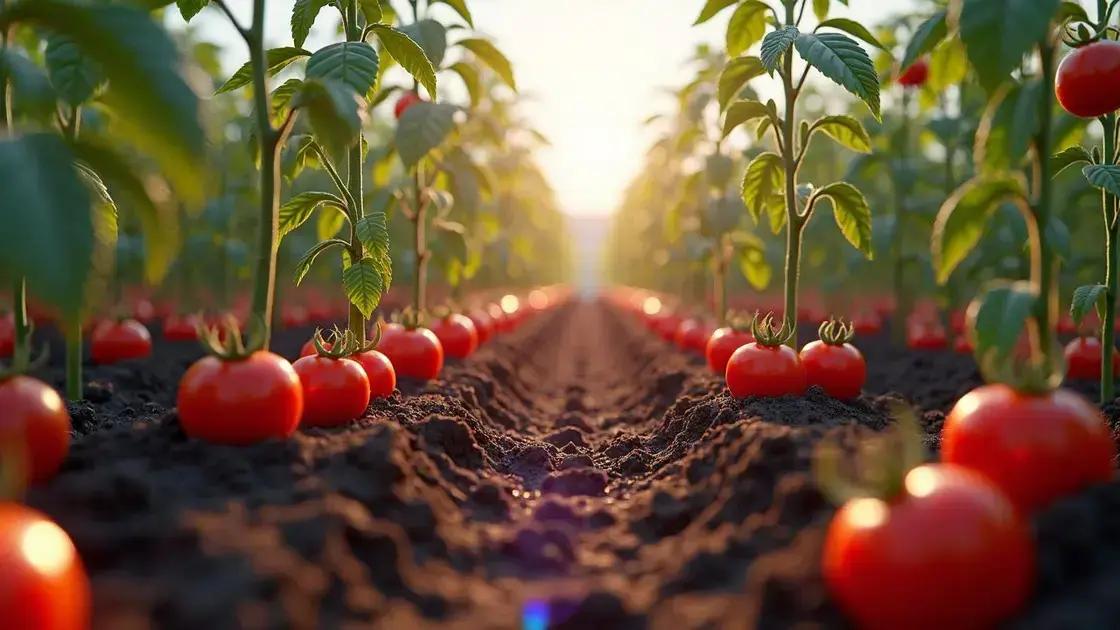How to Care for Tomato Plant: 5 Essential Tips for Thriving Growth
How to care for tomato plant effectively requires understanding its unique needs. From ensuring the right amount of sunlight to maintaining a consistent watering routine, every detail matters. By identifying the essential practices that lead to thriving tomato plants, you can enjoy a bountiful harvest. Let’s explore how to achieve vibrant greenery with simple yet effective techniques.
Table of Contents
ToggleEssential watering schedule for healthy tomato plants
How to care for tomato plant effectively starts with understanding the essential watering schedule necessary for healthy tomato plants. Proper watering not only ensures robust growth but also enhances the flavor of the fruits.
Key watering guidelines
- Frequency: Water your tomato plants consistently, aiming for once every 2-3 days in warm weather, adjusting based on rainfall and humidity.
- Amount: Each watering session should provide about 1-2 inches of water to sufficiently hydrate the soil.
- Soil moisture: Always check the top inch of soil. If it’s dry to the touch, it’s time to water.
Watering methods to consider
- Drip irrigation: This method delivers water directly to the soil and minimizes evaporation, perfect for maintaining consistent moisture levels.
- Soaker hoses: Lay these hoses on the soil surface to allow water to seep out slowly, ensuring deep watering without wetting the leaves.
- Hand watering: If you prefer a hands-on approach, use a watering can or hose with a gentle spray nozzle to avoid disturbing the soil.
Factors Affecting Watering Needs
| Condition | Effect on Watering |
|---|---|
| Weather | Hot, dry weather demands more frequent watering. |
| Plant size | Larger plants typically require more water. |
| Soil type | Loamy soils hold moisture well, while sandy soils drain quickly. |
In addition to adhering to your watering schedule, consider exploring indoor gardening techniques that can further enhance your overall plant care.
With a consistent and thoughtful watering schedule, your tomato plants are sure to thrive. Remember, every plant is unique, so make adjustments as needed based on their appearance and the environmental conditions they are in.
Soil requirements to boost tomato plant growth

Soil requirements to boost tomato plant growth are essential for achieving robust, healthy plants. The right soil not only supports growth but also enhances flavor and yields. Understanding these needs will set you up for gardening success.
Key characteristics of ideal soil
- Well-drained: Tomatoes thrive in soil that allows excess water to drain away to prevent root rot.
- Rich in nutrients: A nutrient-rich environment supports strong growth and fruit production.
- pH level: Aim for a soil pH of 6.0 to 6.8 for the best nutrient absorption.
Types of soil to consider
- Loamy soil: A balanced mixture of sand, silt, and clay, providing excellent drainage and fertility.
- Sandy soil: Drains quickly but often requires more organic matter for nutrient retention.
- Clay soil: Retains moisture but can become compacted, so it may need amending with compost or other materials.
Enhancing soil quality
| Amendment | Purpose |
|---|---|
| Compost | Improves nutrient content and soil structure. |
| Perlite | Enhances drainage and aeration in the soil. |
| Bone meal | Adds phosphorus for improved root and fruit development. |
For best practices, consider periodic testing of your soil to ensure it meets the necessary requirements. Additionally, exploring indoor gardening techniques can provide insights into optimizing soil for various conditions.
Following these guidelines will enhance your tomato plant’s health, leading to a fruitful harvest and a delightful gardening experience.
Sunlight exposure and placement for optimal results
Sunlight exposure and placement for optimal results are crucial for growing healthy tomato plants. Adequate sunlight not only promotes strong green foliage but also ensures that the flowers develop into delicious fruit. Understanding the specific light needs of your tomato plants will set the foundation for a bountiful harvest.
Ideal sunlight requirements for tomato plants
- Tomato plants thrive in 6 to 8 hours of direct sunlight daily.
- Morning sunlight is particularly beneficial, as it helps to dry any moisture on leaves, reducing the risk of disease.
- Avoiding shade is essential, as shadowed areas can lead to weak, leggy growth.
Best placement for tomato plants
- In-ground gardens: Choose a location that receives ample sunlight and is shielded from strong winds.
- Containers: Position containers in a sunny spot, such as a patio or balcony, and rotate them as needed to maximize light exposure.
- Raised beds: Raised beds should be oriented north to south to ensure that sunlight reaches all plants effectively.
Adapting to different climates
| Climate Type | Sunlight Recommendations |
|---|---|
| Hot and dry | Protect from intense mid-afternoon sun to prevent leaf scorch. |
| Cool and cloudy | Increase light exposure by placing plants in the sunniest area possible. |
| Windy | Utilize windbreaks to protect against strong gusts while ensuring sunlight access. |
Incorporating these sunlight guidelines will significantly boost the health and productivity of your tomato plants. Additionally, consider exploring indoor gardening techniques to optimize light usage in indoor settings.
Implementing effective sunlight exposure strategies will undoubtedly pave the way for lush growth and abundant harvests.
In conclusion
Caring for tomato plants requires attention to several key factors, including proper watering, suitable soil conditions, and adequate sunlight exposure. By implementing the essential tips outlined in this guide, you can create a thriving environment for your tomato plants, leading to a bountiful harvest. Remember, each plant has its unique needs, and adapting to these requirements can significantly enhance your gardening success. For additional insights, consider exploring tips on enhancing your indoor garden.

